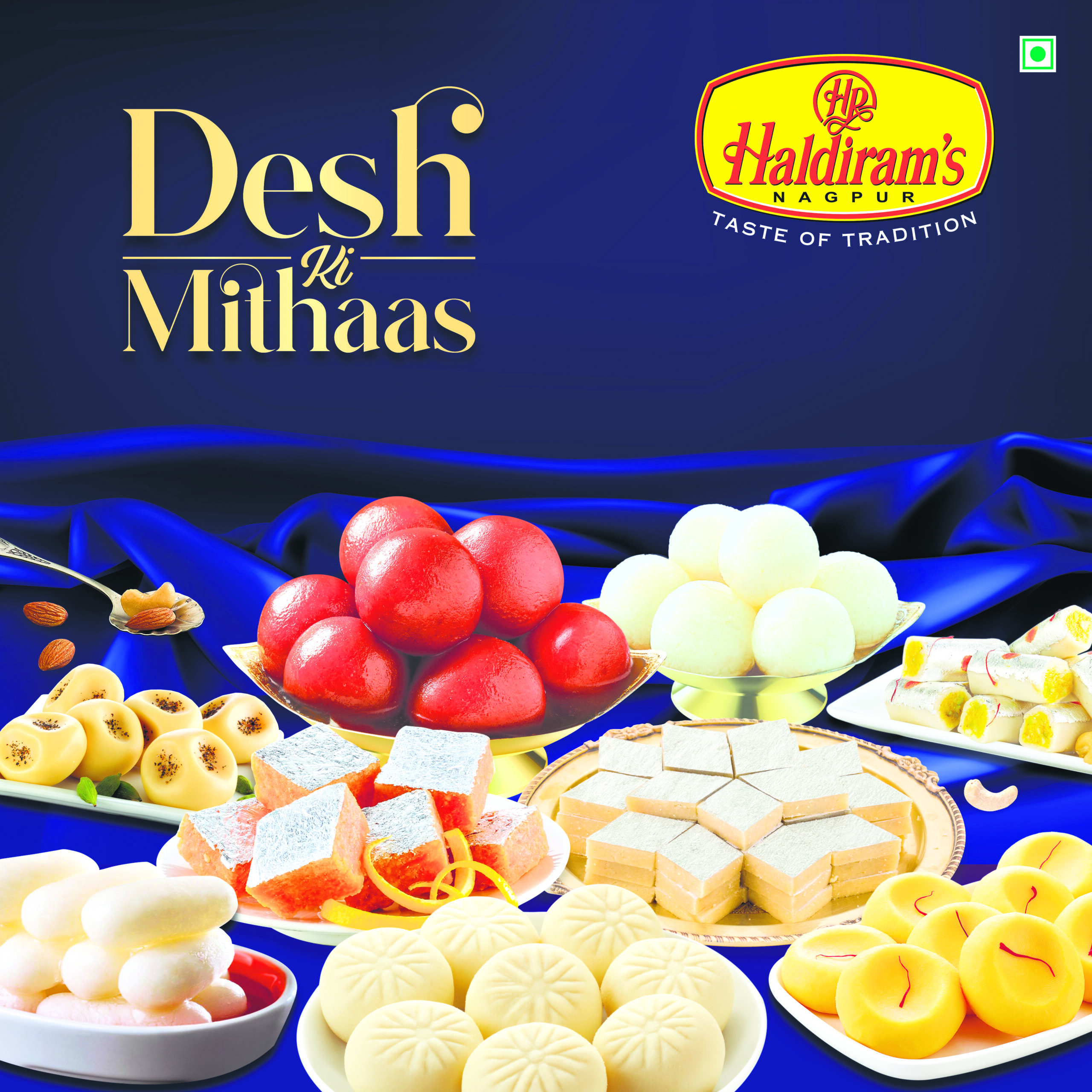
The first day of a new job, a housewarming ceremony, or celebrating the birth of a newborn, no crucial occasion is complete without Indian sweets known as ‘Mithai’. In fact, the love for sweet treats goes beyond religious festivals and auspicious occasions, acting as a means of spreading happiness and cheer. Apart from that, the affection for sweets transcends any specific occasion or celebration. It is certainly true that Indians do not require any special event to enjoy sweet treats; a regular everyday meal in an Indian household is considered incomplete without delicious Gulab Jamuns, tempting Rasgullas, mouthwatering Burfees, and scrumptious Ladoos.
The diversity of mithais is a true reflection of dynamic Indian culture. From north’s Dodha Burfee and Pinni to south’s Mysore Pak, east’s Rasmalai and Rasgulla to west’s Ghewar, India is home to a diverse variety of sweets. One prominent brand, a staple of every Indian household that has played a crucial role in promoting the tradition and culture of mithai is Haldiram’s. The name that every child, adult, or youngster associates with sweet treats, Haldirams’s with its wide array of sweet treats has revolutionized the manner of sweet consumption. Today, when it comes to finding the best and delectable sweets, Haldiram’s has become a preferred choice.
The birth of Indian sweets
India’s centuries-long love affair with mithai has made it a vital component of the country’s culinary legacy. Holding a special place in the hearts and homes of people, the tradition of sweet consumption has changed over time due to a variety of factors such as shifting tastes, local ingredients, and cultural diversity.
The sweet treats have their roots in ancient India, where they were first prepared using basic ingredients like milk, sugar, honey, and ghee. Gradually they started to develop and transform, taking on a vast array of flavors, forms, and textures as trade routes opened and diverse cultural influences merged. Over time, each region in India developed its own unique desserts, with local ingredients as their distinctive selling feature. For instance, rice flour and coconut have taken center stage in southern Indian delicacies like Payasam and Ladoo. In a similar vein, cottage cheese emerged as the primary ingredient in Indian desserts like Sandesh and Rasgulla in the east.
Playing a crucial role in the expansion of the culture of Indian sweets, Haldiram’s has transformed the idea of sweet consumption. In addition to allowing people to enjoy a variety of sweet delights from around India in a single place, Haldiram’s has grown to become a beloved companion for special occasions and celebrations.
Cultural significance
No festival or celebration is complete without traditional Indian desserts. Each festival has its own signature sweet, such as Modak for Ganesh Chaturthi, Gujiya for Holi and Soan Papadi for Diwali. Traditional desserts are, in fact, a staple of Indian meals and are frequently served with the main course in households.
Love for Indian sweet treats extends to every age. Whether it is children or adults, everybody has their own special story of their favorite sweets. And India, among other nations, is beautifully conserving and transferring this tradition to the following generations. Just as festivals are an important part of Indian culture, so is food, particularly Indian sweets, which brings everyone together.
The Indian dessert culture is constantly evolving today, striking a balance between innovation and tradition. While the classic sweets continue to thrive, recent inventions are giving mithais a modern makeover, providing the modern-day generation with delicious new options.
Balancing tradition and innovation, Halidram’s in addition to its existing range of exquisite traditional sweets has also introduced various modern-age treats such as Assorted Dates, Kaju Chocolate Ladoo, and Pista Pan, amongst others. Becoming a companion of both modern-day and traditional generation’s celebrations, Haldiram’s continues to thrive at the behest of its diverse range.
Indian Mithai: The answer to every celebration now and after
Traditional Indian mithai is considered to have a rich cultural history and significance. In addition to being a pleasant treat, it also serves as a symbol of the nation’s numerous traditions and flavors. From their presence in religious rituals to modern-day celebrations, Indian sweets continue to play an integral role in spreading happiness and strengthening bonds.
Going ahead, even though globalization and culinary influences are going to impact major trends in the food industry, the love for mithais will continue to prosper and Haldiram’s will remain at the forefront of preserving and nurturing the affection for traditional sweets.
The author is the Director of Haldiram’s Nagpur.